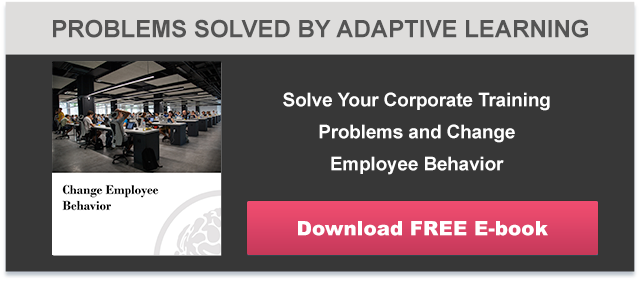While we’re living in an increasingly digital world, classroom training and blended learning - a combination of online and classroom learning - still hold an important place for the learning function. Blended learning, especially, allows employees and businesses to get the best of both: the scale of online learning with the personal leadership of classroom facilitation.
If you want to reap the benefits of face-to-face training, it’s important to reassess the new technologies that tend to go along with it, especially because this digital world is always evolving.
Whether we’re talking about bots and their role in elections, or apps like Replika and GrowthBot trying to replicate and respond appropriately to human questions - or even the way you ask Siri, Google or Alexa to do your bidding - bots have become a trendy topic. They provide an opportunity for machines to speak with humans on at least simple or rote topics or research, negating the need for a real person’s labor. Could bots benefit blended learning models of training?
Let’s define bots to make sure we’re on the same page: A bot is a software application that runs automated tasks over the internet. Bots are used to: communicate via instant messaging; establish a service or create connections via social media; provide commercial functions like automated financial trading; or replace website “live chats” that provide help or service to consumers.
How Do Bots Fit Into Blended Learning Models?
Bots are a useful tool for public speakers or, in the case of corporate learning, course facilitators. Imagine a trainer giving a presentation on a new software application. The trainer could use a bot to:
- Collect immediate feedback about the training and the product
- Share time-appropriate learning resources with learners during a presentation, without losing their train of thought or having to create follow up tasks
Further (solving the problem of access that plagues most traditional face-to-face training, whether in session or afterwards), a QR code tied to the training program software allows learners to enter the bot experience using technology they already have. And all of this can be done by the trainer or the IT team who builds the bot. Using their smartphones (and whatever messaging system they choose) learners enter a sequence tied specifically to the learning objectives set out in the training course, and then they have access to the material. It sounds like this solves a lot of problems faced by on-site training experiences presently, doesn’t it?
In blended learning models, bots could allow learners to:
- Ask questions, instead of having to wait for a designated question period
- Share learning resources the trainer discusses in real-time
At the end of training, once learners have had a chance to digest what they’ve learned, the bot could:
- Ask for feedback on the training, the course, and how learners felt about it
- Share presentation materials that refresh learner memories
Why Bots Are Still a Step Back From Adaptive Learning
Bots certainly provide engaging tools to trainers, but do they help a blended learning classroom do the one thing all corporate learning must do? Do bots change employee behavior to positively impact the business?
No. Bots don’t ensure that a learner has fully understood the learning content; they’re simply a new way of presenting learning content to, and engaging with, the learner.
By comparison, Adaptive Learning is used to prepare learners ahead of time for the classroom portion of blended learning. Adaptive Learning does this by reviewing learning content through the adaptive engine, negating the need for trainers to lecture learners once they’re in the classroom.
This unique learning experience provides online training up to 50% faster than traditional e-learning methods. The personalization ensures that learners are only shown learning content they need to know and don’t waste time with content they’ve already mastered. Once the learner is in the classroom setting, the personalization continues from the trainer, who is freed from lecturing to devote more time to classroom discussion. The data on learner performance and confidence, which the Adaptive Learning system collects, alerts the classroom trainer to learners who need one-one-one training in areas of weakness.
Bots vs Adaptive Learning
Bots can engage the learner and do a lot of legwork for the trainer, but they don’t yet improve the learning experience in a quantifiable way, like providing faster training time or guaranteeing learner mastery. Adaptive Learning already does this.
Bots seem better suited to one-time speaker events, where knowledge is shared but does not have to be understood by a group of employees. By contrast, Adaptive Learning improves the corporate learning experience.
So is building a new bot the best use of your time - or your IT team’s? Or do you want to look at software that can already work as well as a bot and also promises positive business impact?
Download this comparative case study to learn some other ways that Adaptive Learning has changed employee behavior for two of Area9’s clients.
References: https://blog.hubspot.com/marketing/public-speaker-messenger-bots









